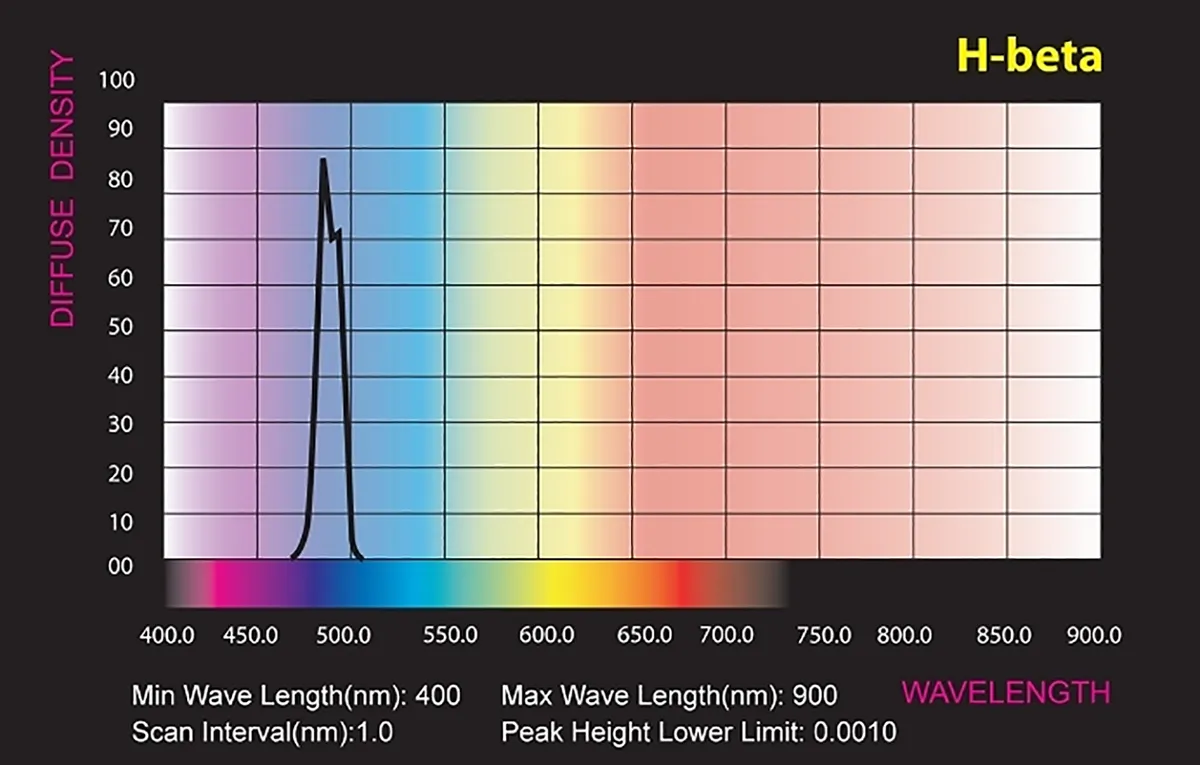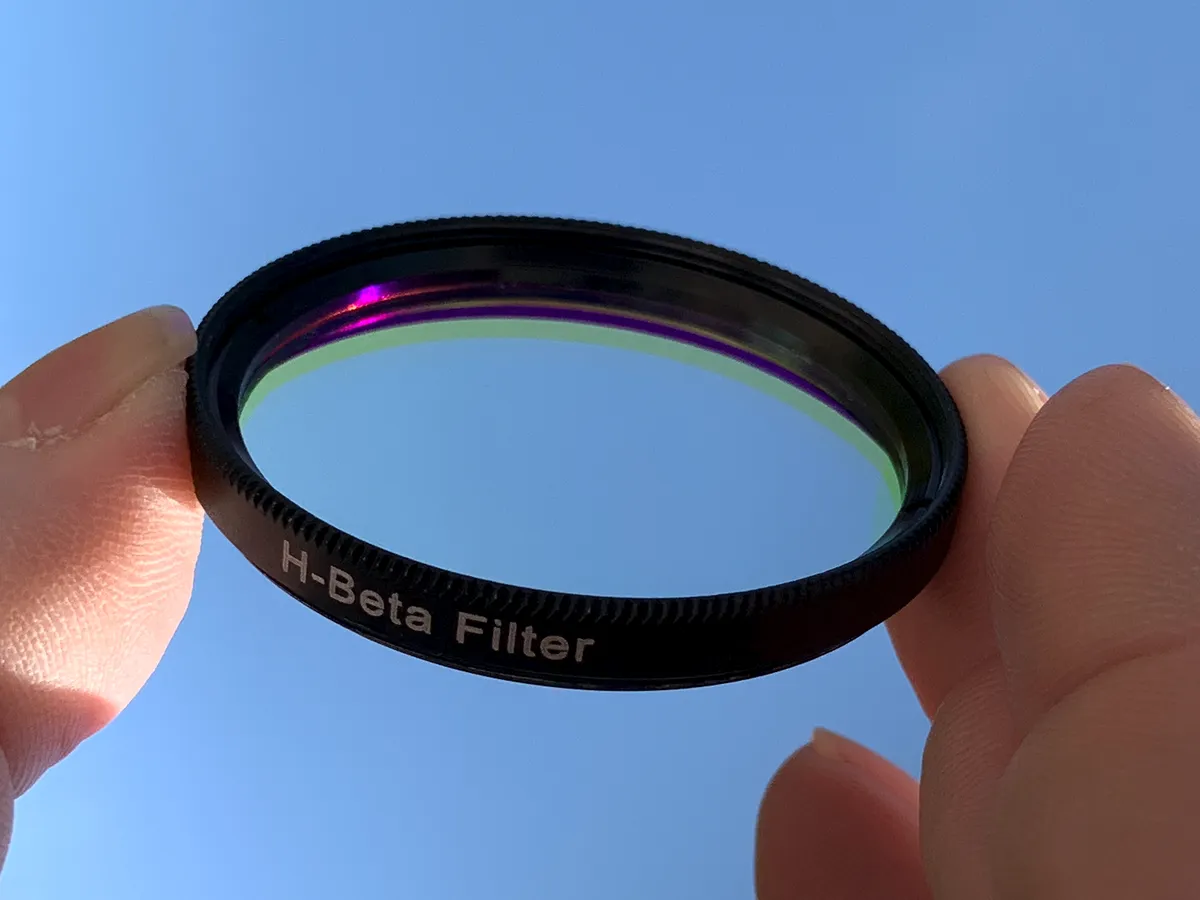Filters help to enhance the views of objects by only allowing particular wavelengths to pass and, as such, are very useful for what is termed 'narrowband' imaging.
Some of these popular filter wavelengths fall into the visual spectrum such as Oxygen (O-III) (496 and 501nm) and H-Beta at 486nm, which are emission lines found in many popular deep-sky objects involving nebulosity, such as the Orion Nebula and in planetary nebula too.
Here we take a look at the OVL H-Beta 2 inch fit filter for its usage visually.
The filter is available in both 2-inch and 1.25-inch fit, and we found the 2-inch filter screwed in easily to our two test eyepieces of na Ethos 21mm and a Skywatcher 26mm eyepiece.
It is a common misconception that you need large aperture to be able to use this type of filter visually, so we used the eyepieces on our StarGate 500 f/4 Dobsonian and also on our far smaller 80mm apo refractor to see how it worked at two ends of the scale.

Firstly with the StarGate 500 we checked out some of the normal astro targets of galaxies and clusters to see if the H-beta filter made any difference.
As expected, those targets were not improved and, in the galaxies' case, were actually slightly dimmed. However our slight light pollution was significantly cut down so in this aspect we could still use it on such targets.
But the real joy was turning to nebula. The Ring (M57) and Dumbbell (M27) nebulae were stunning and as the background was darkened they veritably shone like beacons!
We traced most aspects of the Veil Nebula marvelling at how photographic they looked, although the H-Beta wavelength does give everything a bluish tint.

The Crescent Nebula was also stunning: we wondered why we’d not considered this filter before.
Turning to the 80mm apo refractor, the dramatic loss in light gathering capability stood out but we found that with patience and persistence we could faintly make out the brighter parts of the Veil Nebula
Both the Ring and Dumbbell nebulae again stood out whist the Crescent was just about viewable.
Removing the filter and the fainter of these objects were lost in the subtle light pollution.
The H-Beta filter improves the contrast between nebulae and the background sky, but although it can be used with smaller apertures it does come into its own with systems with more light grasp.
Vital stats
- Price £39.99
- Size 2-inch
- Bandpass Hydrogen – Beta (H-Beta)
- Wavelength 486nm
- Supplier Optical Vision Ltd
- Website www.opticalvision.co.uk
